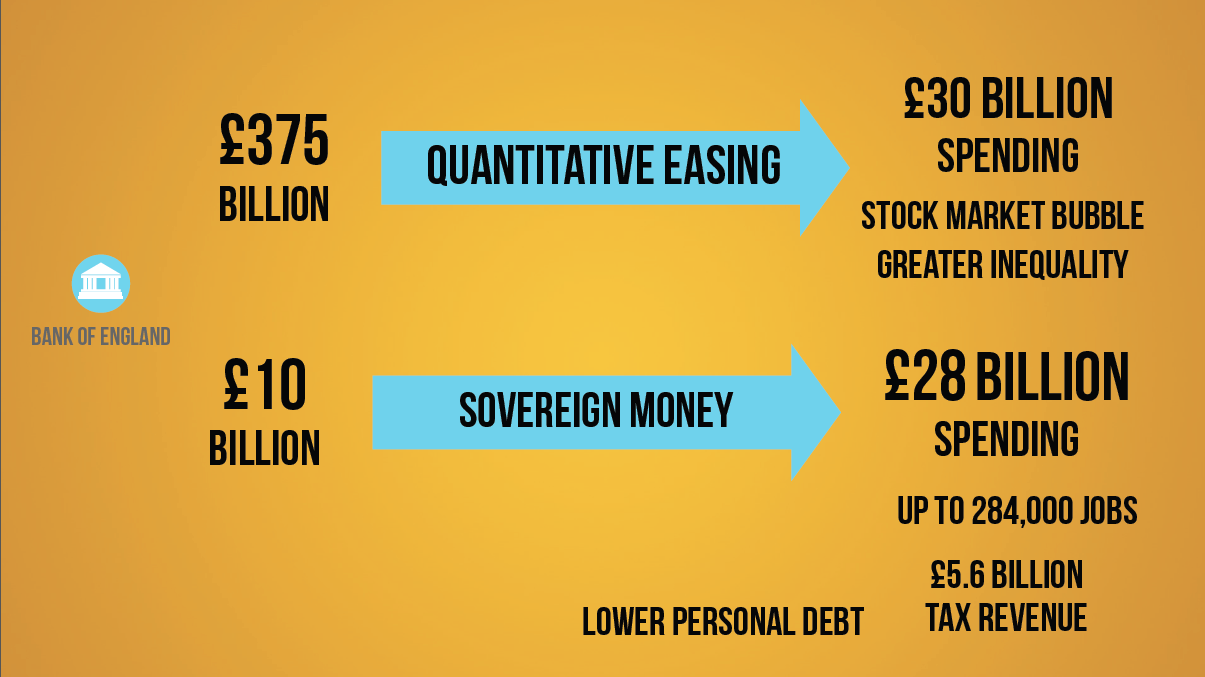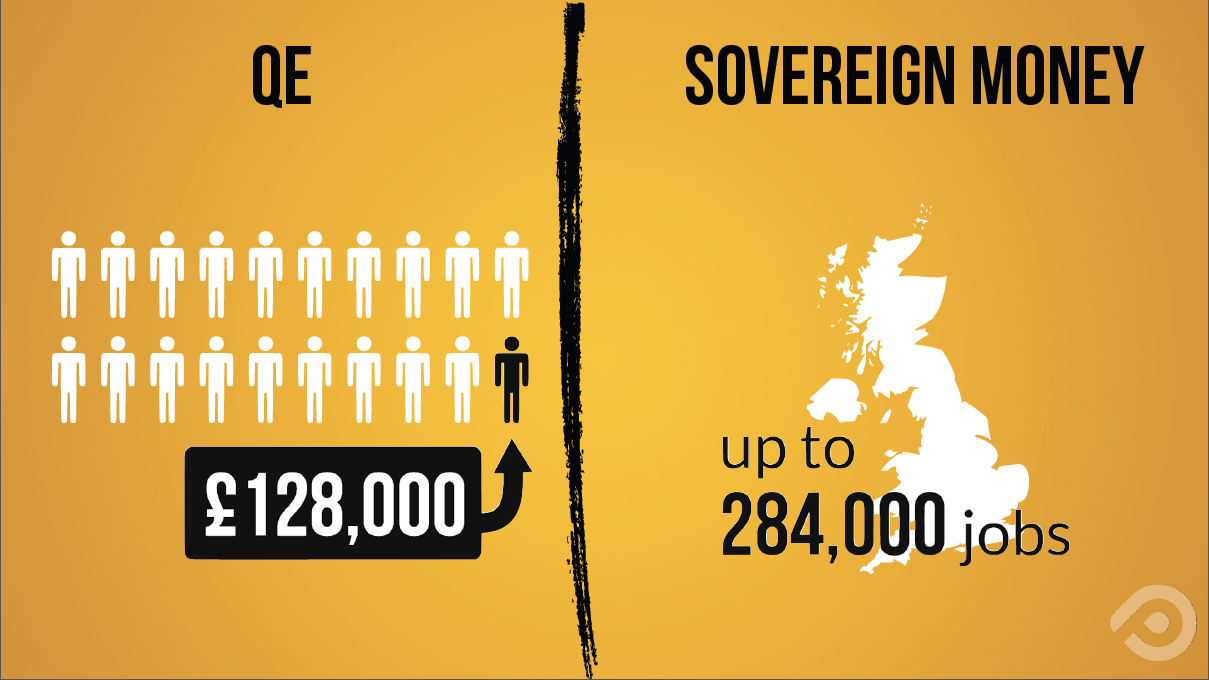How to Fuel the Economy Without Increasing Debt, through Sovereign Money (Videos)

Ben Dyson, Founder of Positive Money, presented at the Positive Money 2014 conference the Sovereign Money Creation proposal. This proposal offers a way to make the recovery sustainable. In a similar way to Quantitative Easing, Sovereign Money Creation (SMC) relies on the state creating money and putting this money into the economy. But whereas QE relied on flooding financial markets and hoping that some of this money would ‘trickle down’ to the real economy, SMC works by injecting new money directly into the real economy, via government spending, tax cuts or rebates. By getting spending power directly into the hands of the public, this new solution could be up to 37 times more effective than Quantitative Easing in boosting GDP.
The pivotal advantage of SMC is that unlike the Government’s current growth strategies – which all rely on an over-indebted household sector going even further into debt – SMC requires no increase in either household debt or Government debt. In fact, SMC can actually reduce the overall levels of household debt. It would also make banks more liquid and the economy fundamentally safer.
Sovereign Money creation of £10 billion would lead to 28 billion spending, up to 284 000 jobs and 5.6 billion tax revenue, and lower personal debt. (These calculations come from CBI figures.)

“QE is a scheme that has used £375 billion of newly created money to make the very wealthy much better off on paper (so increased inequality) and yet has done very little to create jobs and to get the real economy going.”

In this second video Ben answers the questions from the audience – the most common objections to this proposal, whether this might be illegal under the Lisbon and Maastricht Treaty, efficiency of QE, pros and cons of various ways of distribution of sovereign money etc.
http://www.youtube.com/watch?v=RzG1YfwTo04
Read Sovereign Money Creation: Paving the Way for a Sustainable Recovery